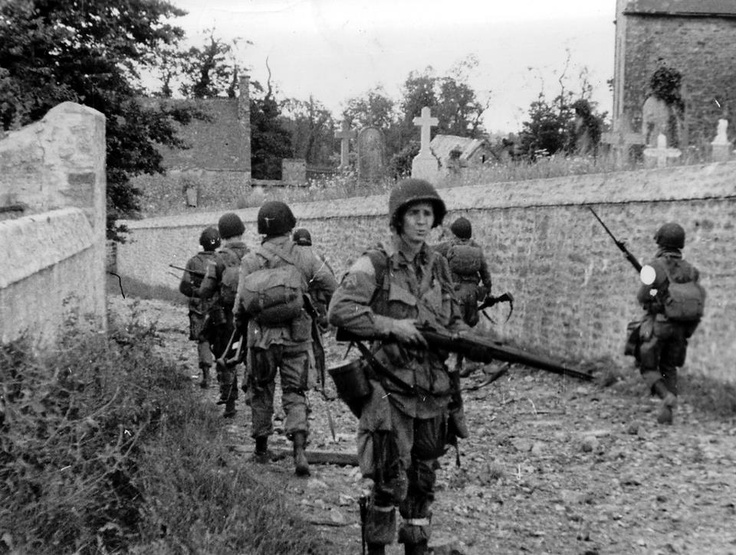Hugh Wallis, 92, served as a paratrooper in the 82nd Airborne during World War II. Unlike his hair, which has now faded to white, Wallis’s memories of that tumultuous time have remained vivid.
Wallis was born in 1924 in Cadiz, Kentucky, to parents Sydney and Leana. He attended Trigg County High School and, just a year after he graduated in 1942, he was drafted into the U.S. Army. His parents tried to get their son’s draft deferred – they needed him to help on the farm. Although their attempts were not successful, Wallis himself wasn’t particularly upset.
He was sent to Fort Polk, Louisiana, for basic training. After he was finished, he responded to a notice seeking men to volunteer to join a special unit. Having grown up with very little by way of money, and seeing that paratroopers were paid $50 per month, Wallis took the opportunity. After getting written permission from his parents to join the paratroopers – Wallis was not yet twenty-one years old – he and two other volunteers were sent to Fort Benning in Georgia.
During training, the volunteers lived in tents, and, in the beginning, men would practice by jumping from a 250-tower. They had to pack their chutes the night before a drill and could not recheck them in the morning, Wallis explained. Despite the stress and danger, Wallis became a qualified paratrooper as of December of 1943.
Wallis’s group left the country in January of 1944 by way of a Merchant Marine ship. They landed at Casablanca in Africa, and after a grueling trek, they reached their final destination – Anzio, Italy.
While in Italy, Wallis recalled seeing the German planes flying overhead and being shot down by Allied troops. The coalition of forces, of which Wallis was a part, was known officially as the 3rd platoon, Company H, 504th Regiment of the 82nd Airborne.
The men traversed difficult terrain and avoided German soldiers and landmines, but they finally arrived at the Mussolini Canal. It was there that the enemy spotted them and opened fire. Wallis sustained an injury in his upper right thigh and was evacuated to a MASH tent for medical care.
The medics could see that the shrapnel had hit Wallis’s bone and said that surgery was required, but just as Wallis was falling unconscious, he saw enemy fire ripping through the tent – one of the nurses who had helped Wallis was killed.
Wallis did recover from that injury and in March of 1944, he joined the 504th as they sailed to England, where training continued. This time, they were preparing for another invasion on the beaches of Normandy.
Luck was with Wallis. He was not assigned to the jump at Normandy, and the jump to Paris was canceled; the city had been liberated. Wallis did take part in the historic jump on September 17, 1944, called Operation Market Garden, in Holland. The group that jumped was a mixture of the 82nd and the 101st Airborne. Their objective: Take control of a bridge at Grave.
The trio of planes flew low to stay under German radar. When the plane to his left was shot down, Wallis counted the chutes. The only casualty was the pilot. When his squad landed, the Dutch underground greeted them. Although Wallis was well-armed, he did not have to fight; the bridge at Grave was taken in seventeen minutes with no resistance.
After that victory, Wallis’s group marched through Holland. When they reached Waal River, they attempted to cross over in canvas rowboats. One shot from enemy fire and the boat Wallis was on began to sink. As he was able to release the 50-pound pack from his back, Wallis survived to be rescued. His boat-mates did not.
Wallis was among the first to fight at the Battle of the Bulge in the Ardennes Forest, in southern Belgium and Luxembourg. The battle began on December 16th, 1944, and continued until February 1945. The severe weather caused frostbite and trench foot. Due to the blizzards, visibility was almost zero, and the soldiers’ gear was damaged by the frost.
Wallis returned to Kentucky in early in August of 1945 and enrolled in electrician school. He later moved to Fort Wayne and worked at ITT/Farnsworth. He retired in 1986 and now spends time with his second wife, Susan (Lola, his first wife, passed away in 1984), and three grown children. Even in retirement, Wallis speaks to students and even participated in Honor Flight of Northeast Indiana.
